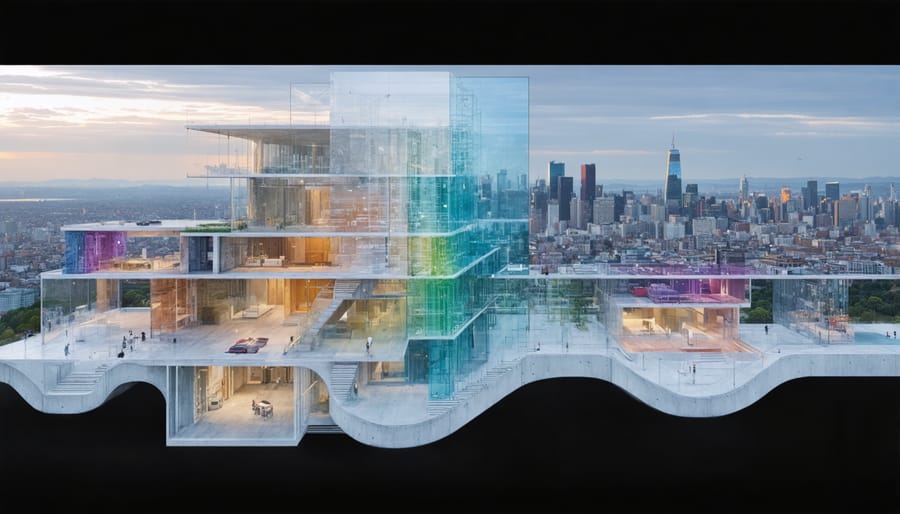Discover the cutting-edge innovations revolutionizing modern construction in advanced building components. From self-healing concrete that repairs its own cracks to ultra-efficient insulation materials that slash energy costs, these groundbreaking technologies are transforming how we design, build, and maintain structures. Explore how smart glass, solar roof tiles, and 3D-printed building elements are pushing the boundaries of what’s possible. Learn about the game-changing potential of mass timber, which offers unmatched sustainability and strength. Delve into real-world case studies showcasing these components in action, from towering skyscrapers to net-zero homes. Discover expert insights on integrating these innovations into your projects for enhanced performance, occupant well-being, and environmental responsibility. Embrace the future of construction with advanced building components.
High-Performance Insulation Materials
Benefits and Applications
Advanced building components offer numerous advantages for modern construction projects. These innovative materials enhance energy efficiency, reduce environmental impact, and improve occupant comfort. For instance, smart glass windows dynamically adjust to control heat gain and glare, leading to reduced HVAC loads and improved indoor climate control. Similarly, advanced insulation materials, such as aerogel and vacuum-insulated panels, provide superior thermal performance in thinner profiles, allowing for more usable space and energy efficiency. Green roofs and living walls not only add aesthetic value but also contribute to urban biodiversity, stormwater management, and building insulation. Engineered timber, like cross-laminated timber (CLT), offers a sustainable and lightweight alternative to concrete and steel, suitable for mid-rise and high-rise construction. These advanced components are ideal for projects prioritizing sustainability, occupant well-being, and long-term performance, making them essential tools for architects, engineers, and builders shaping the future of the built environment.
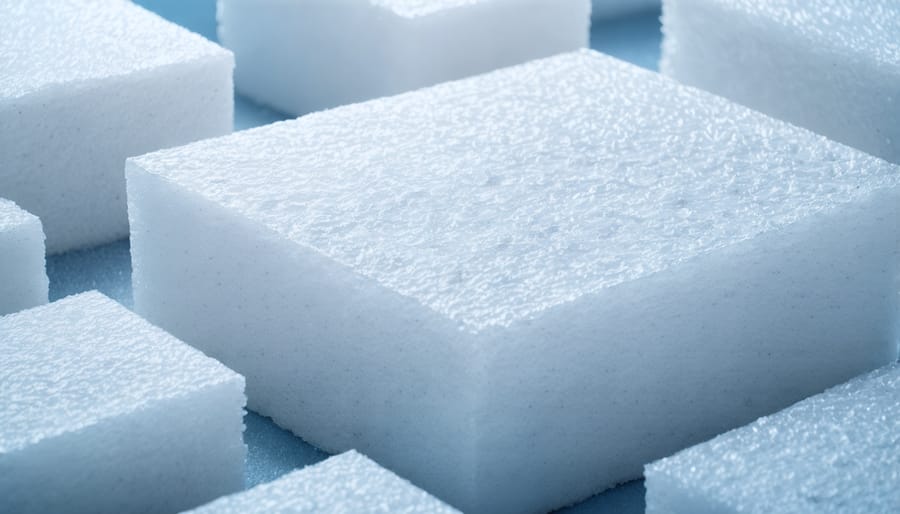
Installation Techniques
Proper installation techniques are crucial for ensuring the optimal performance and longevity of advanced building components. Experts recommend following manufacturer guidelines closely, as each component may have specific requirements for handling, placement, and integration with other building systems. Paying attention to details such as precise measurements, correct fastening methods, and proper sealing can significantly impact the effectiveness of these components.
Case studies have shown that investing time in thorough preparation, such as cleaning and priming surfaces before installation, can prevent issues like moisture intrusion or air leakage. Additionally, it is essential to consider the compatibility of different materials and account for factors like thermal expansion and contraction when installing advanced components. Regular quality control checks during the installation process can help identify and rectify any potential problems early on, ultimately saving time and resources in the long run. By prioritizing proper installation techniques, construction professionals can maximize the benefits of advanced building components and deliver high-performance, sustainable buildings.
Smart Glass Technologies
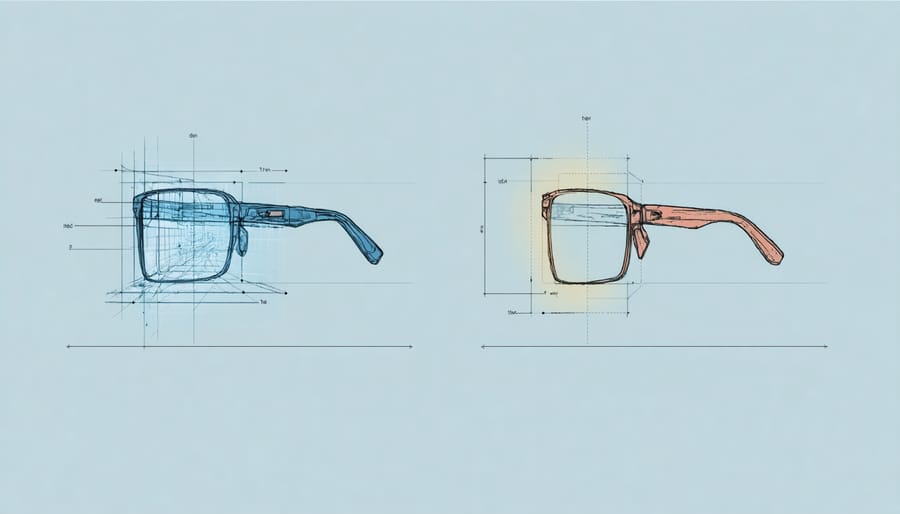
How Smart Glass Works
Smart glass technologies work by controlling the amount of light and heat that passes through the glass, either by applying an electrical current or using photochromic, thermochromic, or electrochromic materials. Electrochromic smart glass contains metal oxide layers that change opacity when voltage is applied, allowing dynamic control of light transmission, solar heat gain, and glare. Photochromic and thermochromic glass automatically darken in response to UV light or heat, respectively, without requiring an electrical connection. Polymer dispersed liquid crystal (PDLC) glass becomes transparent when electricity aligns the liquid crystals, offering instant privacy control. Suspended particle devices (SPDs) use conductive coatings and a low-voltage current to orient light-absorbing particles, providing variable tint states. These smart glass solutions integrate seamlessly with building automation systems and modular building components, enhancing energy efficiency, occupant comfort, and architectural design flexibility in modern construction projects.
Real-World Applications
Smart glass technology has been successfully implemented in several high-profile projects worldwide. The Boeing 787 Dreamliner incorporates electrochromic windows, enhancing passenger comfort and reducing energy consumption for cabin lighting and cooling. In the retail sector, the Herno flagship store in Milan utilizes smart glass to create an immersive, adaptable shopping experience. The store’s facade and interior partitions can be electronically controlled to adjust transparency, allowing for dynamic displays and optimized natural light. These real-world applications demonstrate the practical benefits and versatility of smart glass in improving occupant well-being, energy efficiency, and aesthetic appeal across various industries.
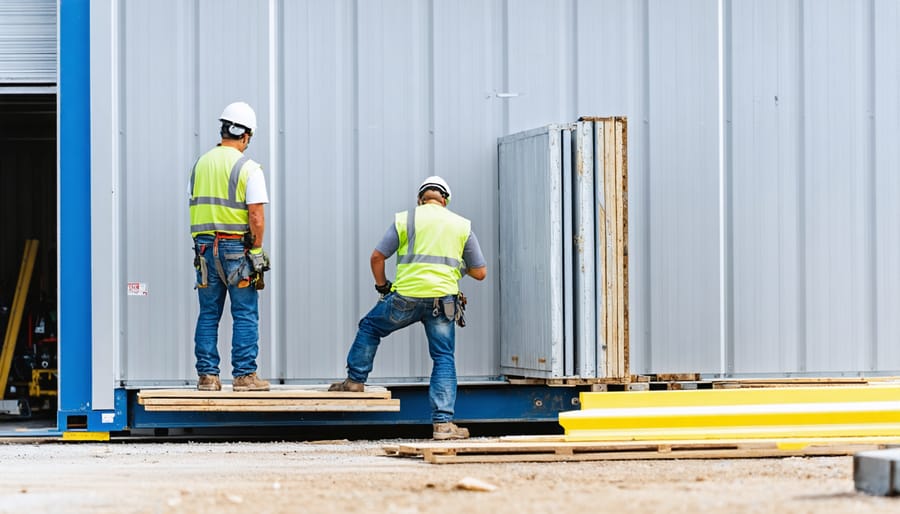
Prefabricated and Modular Components
Benefits of Prefabrication
Prefabrication offers numerous benefits that revolutionize the construction process. By manufacturing building components off-site in a controlled environment, prefabrication significantly reduces material waste, as precise measurements and cutting techniques minimize excess. Quality control is vastly improved, with strict oversight and standardized processes ensuring consistent, high-quality results. Defects and errors are caught early, reducing costly on-site corrections. Prefabrication also dramatically shortens project timelines. Weather delays are minimized, and on-site assembly is streamlined. Concurrent off-site manufacturing and on-site preparation further compress schedules. These advantages collectively lead to substantial cost savings and increased project efficiency. Industry experts, such as [expert name], emphasize that prefabrication is a game-changer, stating, “[quote highlighting benefits].” Case studies, like [project name], demonstrate the tangible impact of prefabrication, with [statistics on waste reduction, quality improvement, or timeline reduction]. As the construction industry continues to embrace prefabrication, these benefits will become increasingly apparent, setting a new standard for efficient, high-quality building projects.
Challenges and Solutions
Prefabrication in advanced building components faces challenges such as transportation logistics, on-site assembly, and limited customization. Expert solutions involve meticulous planning, close collaboration between off-site and on-site teams, and leveraging digital tools like BIM for seamless integration. Modular design strategies allow for greater flexibility and customization while maintaining the benefits of prefabrication. Investing in specialized equipment and training ensures efficient handling and installation of prefabricated components. Establishing clear communication channels and quality control processes throughout the project lifecycle is crucial for success. By addressing these challenges head-on with innovative solutions, construction professionals can harness the full potential of prefabrication in advanced building components.
Advanced HVAC Systems
Energy Efficiency Gains
Advanced building components play a crucial role in optimizing energy use and reducing operating costs. Smart HVAC systems utilize sensors and automated controls to maintain optimal temperatures and ventilation based on occupancy, weather conditions, and building usage patterns. This minimizes energy waste and ensures a comfortable indoor environment. High-performance windows and insulation materials enhance the building envelope’s thermal resistance, preventing heat loss in winter and heat gain in summer. LED lighting systems with daylight harvesting and occupancy sensors reduce electricity consumption while providing high-quality illumination. Renewable energy integration, such as solar panels and geothermal systems, generates clean power on-site, lowering reliance on grid electricity. Water-efficient plumbing fixtures and rainwater harvesting systems conserve water resources and reduce utility bills. By implementing these advanced components, buildings can achieve significant energy efficiency gains, lower operating expenses, and contribute to a more sustainable built environment.
Integration with Building Automation
Advanced HVAC systems seamlessly integrate with building management systems (BMS) to optimize energy efficiency and occupant comfort. By connecting HVAC components to the BMS, facility managers can monitor and control temperature, humidity, and air quality in real-time. This integration enables automated adjustments based on occupancy levels, weather conditions, and predefined schedules, reducing energy waste and operational costs. Furthermore, the BMS can gather data from the HVAC system to identify potential issues, schedule preventive maintenance, and ensure compliance with green building certifications. The seamless integration of advanced HVAC and BMS technologies creates intelligent, responsive buildings that prioritize both energy efficiency and occupant well-being.
Sustainable Building Materials
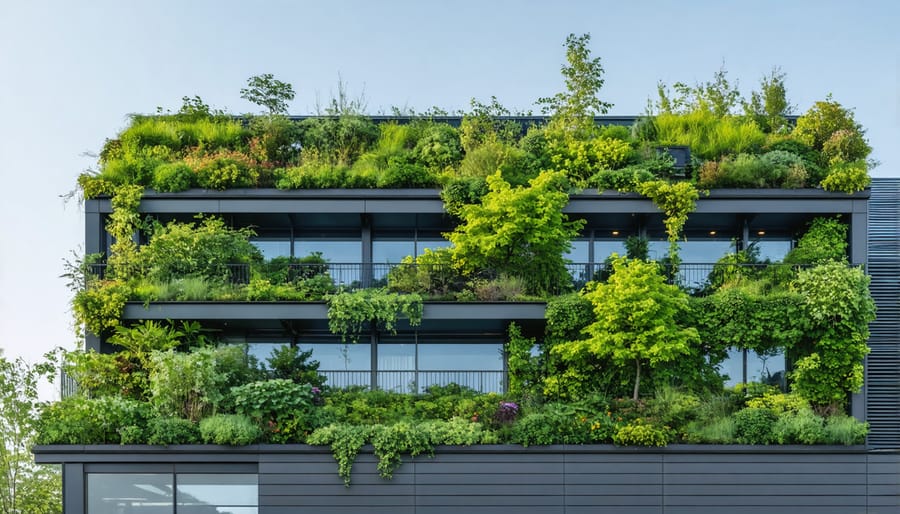
Environmental Impact Reduction
The use of advanced building components can significantly reduce the environmental impact of construction projects. Studies have shown that recycled steel, for example, requires 75% less energy to produce compared to virgin steel, resulting in a 50-75% reduction in greenhouse gas emissions. Similarly, cross-laminated timber (CLT) stores carbon sequestered by trees, with a cubic meter of CLT offsetting approximately one ton of CO2 emissions. Innovative insulation materials like aerogel and vacuum insulated panels (VIPs) can provide superior thermal performance with minimal thickness, reducing energy consumption for heating and cooling by up to 50%. Green roofs and walls not only enhance biodiversity but also mitigate urban heat island effects, potentially lowering ambient temperatures by 3-5°C. Furthermore, the integration of photovoltaic glazing and building-integrated photovoltaics (BIPV) enables buildings to generate their own clean energy, significantly reducing reliance on fossil fuels. By carefully selecting and incorporating these advanced building components, construction professionals can create structures that are not only highly efficient and functional but also environmentally responsible, contributing to a more sustainable built environment for future generations.
Sourcing and Certification
When sourcing materials for advanced building components, prioritize suppliers that offer environmentally responsible and ethically sourced options. Look for materials certified by reputable organizations like the Forest Stewardship Council (FSC) for wood products or the Cradle to Cradle Products Innovation Institute for a wide range of sustainable materials. Navigating green building certifications can be complex, but pursuing LEED, BREEAM, or Living Building Challenge certifications can demonstrate your commitment to sustainability and help guide your material selection process. Work with experienced consultants to identify the most appropriate certifications for your projects and develop strategies to meet their requirements while leveraging advanced building components to enhance overall sustainability performance.
Conclusion
The advancements in building components discussed in this article are revolutionizing the construction industry, paving the way for a more sustainable, efficient, and technologically integrated future. From self-healing concrete and photovoltaic glazing to smart HVAC systems and advanced insulation materials, these innovations are addressing key challenges faced by the industry, such as energy efficiency, durability, and occupant comfort. The successful implementation of these components in various projects worldwide demonstrates their potential to transform the way we design, build, and maintain structures.
As the construction industry continues to evolve, it is crucial for professionals, decision-makers, architects, engineers, and project managers to stay informed about these cutting-edge technologies and materials. Embracing these advancements can lead to significant benefits, including reduced environmental impact, lower operational costs, improved building performance, and enhanced occupant well-being. By adopting these innovative solutions, the industry can collectively work towards creating a more sustainable and resilient built environment.
However, the journey towards widespread adoption of advanced building components is ongoing. Continued research, development, and collaboration among industry stakeholders are essential to further refine these technologies, address any limitations, and make them more accessible and cost-effective. As we move forward, it is important to encourage open dialogue, knowledge sharing, and partnerships between manufacturers, researchers, and construction professionals to drive innovation and overcome any barriers to implementation.
The future of construction is bright, with advanced building components leading the way towards smarter, greener, and more adaptable structures. By embracing these innovations and working together as an industry, we can shape a built environment that is not only functional and efficient but also responsive to the evolving needs of society and the planet.

